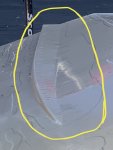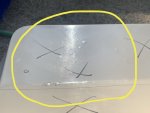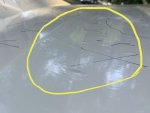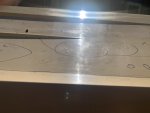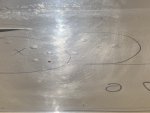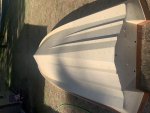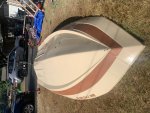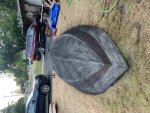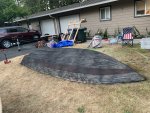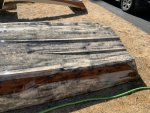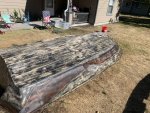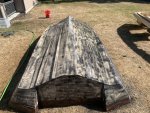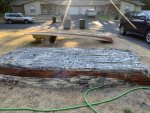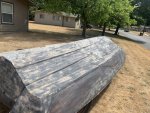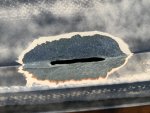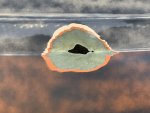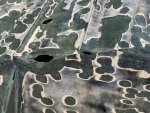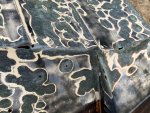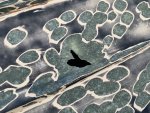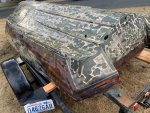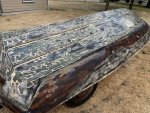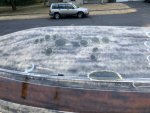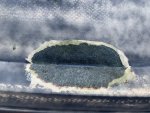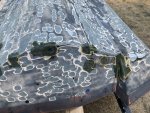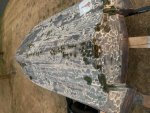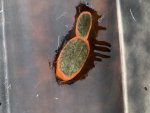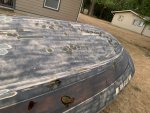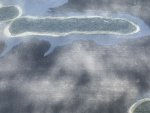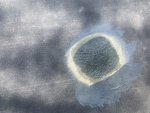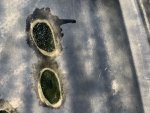das_army_life_yah
Petty Officer 2nd Class
- Joined
- Apr 3, 2020
- Messages
- 122
kcassells I had some decent sunlight to work this morning, so I was able to get a few good pics of the blisters. I circled the areas that had high concentrations of smaller blisters (about 1/4” and smaller). The two close-ups that I didn’t circle are the clearest shots I managed to get of some of the larger blisters. When I pressed on a few of the bigger ones, it was fairly easy to make a circular crack where the outer edge of the blister is.
When I first realized it had blisters, I ground out a couple of them. I noticed that the centers were a bit discolored. I also noticed a bit of what I thought looked like delamination. The centers weren’t grinding smooth like the outer edges did. Instead, the glass in the center seemed to be fraying off until I ground a little deeper. Then it started to finally smooth out.
I’m trying to decide the best way to tackle these blisters (or whatever they are). My plan for today is to start grinding out all of the bigger ones that aren’t in the areas I circled in Sharpie. These areas are where there is too many small blisters to try to grind them out one-by-one. I’m thinking about laying down a guide coat in these area, stretching the guide coat a bit beyond the Sharpie outline. I then plan on sanding the whole area to see where the blisters start/stop so I can try to minimize the size of these areas the best that I can. If it works, and I have a better idea of where they start/stop, I’m going to sand off all of the gelcoat and then build it back up with glass and fair it out.
I’d really like your guys’ input on this before I start ripping all the gelcoat off in those spots. I’m sure you more experienced folk can come up with a better alternative for me to go about this. LOL. Keep in mind, I am not super concerned with the finish on the underside of the hull. Since it will either be on a trailer or in the water, “good from 10/15 feet away” is more than good enough for me.
***SIDE-NOTE***
After I got the hull flipped over, I noticed lengthy cracks in the gelcoat that run down the sides of the two inner chines (from stern to a foot or so behind the middle of the hull). I’m almost wondering if this is why there’s so many little blisters in the rear of the hull given the most heavily concentrated areas are near the chines.
When I first realized it had blisters, I ground out a couple of them. I noticed that the centers were a bit discolored. I also noticed a bit of what I thought looked like delamination. The centers weren’t grinding smooth like the outer edges did. Instead, the glass in the center seemed to be fraying off until I ground a little deeper. Then it started to finally smooth out.
I’m trying to decide the best way to tackle these blisters (or whatever they are). My plan for today is to start grinding out all of the bigger ones that aren’t in the areas I circled in Sharpie. These areas are where there is too many small blisters to try to grind them out one-by-one. I’m thinking about laying down a guide coat in these area, stretching the guide coat a bit beyond the Sharpie outline. I then plan on sanding the whole area to see where the blisters start/stop so I can try to minimize the size of these areas the best that I can. If it works, and I have a better idea of where they start/stop, I’m going to sand off all of the gelcoat and then build it back up with glass and fair it out.
I’d really like your guys’ input on this before I start ripping all the gelcoat off in those spots. I’m sure you more experienced folk can come up with a better alternative for me to go about this. LOL. Keep in mind, I am not super concerned with the finish on the underside of the hull. Since it will either be on a trailer or in the water, “good from 10/15 feet away” is more than good enough for me.
***SIDE-NOTE***
After I got the hull flipped over, I noticed lengthy cracks in the gelcoat that run down the sides of the two inner chines (from stern to a foot or so behind the middle of the hull). I’m almost wondering if this is why there’s so many little blisters in the rear of the hull given the most heavily concentrated areas are near the chines.
Attachments
Last edited:




















